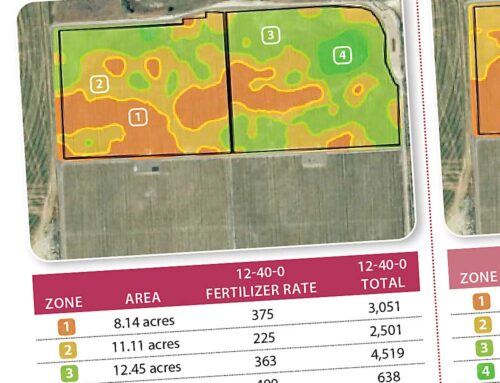Precise application of pesticides in orchards provides growers with better crop protection, less environmental pollution, and better use of resources. It costs less when pesticides are not wasted.
Since coming to Cornell University in 1998, Dr. Andrew Landers has been working to make airblast canopy sprayers, designed more than 50 years ago, better fit modern, well-pruned orchards.
“Many canopy sprayers use some form of air assistance from fans that are frequently too large for these orchards,” Landers said. “The large-diameter fan creates too much air for the target canopy. Air speed and volume need to be adjustable according to the growth stage of the canopy.”
Much of Landers’s work has been aimed at making airblast sprayers do their work better, but he is also involved in a project that, in the future, may eliminate airblast sprayers completely.
Called the solid-set canopy spray delivery system, it would use fixed-in-place “irrigation” lines, nozzles, and emitters for application of pesticides, plant growth regulators, and even water for evaporative cooling.
Conceivably, such a method would allow precise timing—an all-at-once, short-duration application at greatly reduced rates. The project involves researchers across the country. While this may be a system for the future, growers now need to adjust their airblast sprayers in ways that improve deposition and reduce drift.
In an article in Good Fruit Grower earlier this year, Landers said that the work at Cornell has focused on matching airflow to the canopy, and changing airflow as the canopy develops.
“Ideally, air volume should match canopy volume,” he said. Ideally, that would change tree by tree, and deliver no spray where there is no tree. Sensing systems have been developed that detect canopy density and size so that airflow and liquid application rate can be adjusted in real time. “This allows small trees with sparse leaf growth to have less spray and less air and to increase airflow and liquid spray as the canopy develops,” Landers said.
Modern airblast sprayers are fitted with a gearbox, but usually the slowest fan speed is only about 20 percent slower than the fastest speed.
“Using a hydraulic motor to drive the sprayer fan allows the operator to regulate the air velocity leaving the sprayer,” Landers said. “At Cornell University, we retrofitted an axial fan airblast sprayer with a hydraulic motor and a hydraulic control valve, fitted in the tractor cab, to allow the operator to infinitely vary the fan speed from 0 rpm up to 540 rpm.
“The operator can reduce air speed during early to midseason applications and increase it for full canopy applications,” he said.
Landers also developed the “Halsey doughnut,” an air restriction device made of two circular wooden plates with intake holes, the size of which can be adjusted simply by turning one plate.
This restricts airflow at the fan intake.
Cornell researchers also developed and patented an adjustable louvre system, electrically actuated, to adjust airflow from either tower sprayers or traditional airblast sprayers.






Leave A Comment